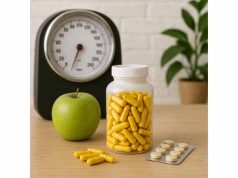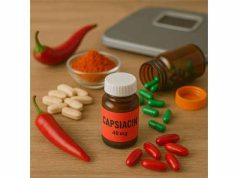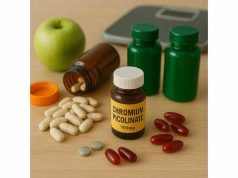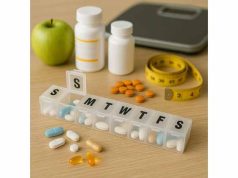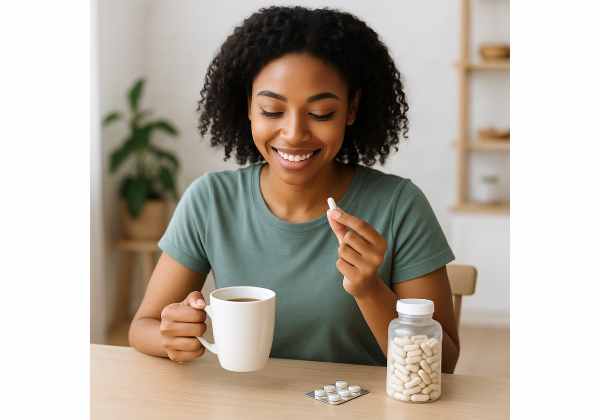
Caffeine is the world’s most used performance aid. It sharpens focus, lifts mood, and can nudge metabolism and appetite in ways that help with weight control. But dose and timing matter. Too little does nothing; too much wrecks sleep and backfires. This guide explains how caffeine affects fat loss, the amounts that actually move the needle, and how to use coffee, tea, or supplements without derailing recovery or raising risk. If you are comparing caffeine with other non-surgical strategies or prescription tools, start with our plain-language overview of medical and supplement options for weight management to see where it fits.
Table of Contents
- Does caffeine help with weight loss?
- How caffeine supports fat loss
- Effective dose and timing
- Common mistakes with caffeine
- Safety, side effects and who should avoid
- What the research actually shows
- Who should use caffeine and when to skip it
- Frequently asked questions
Does caffeine help with weight loss?
Caffeine is a mild stimulant that increases alertness and reduces perceived effort during activity. For weight management, it offers small but meaningful advantages when paired with a structured plan:
- Energy expenditure: Caffeine can raise resting calorie burn by a few percent for several hours, with larger effects in people who rarely use it and smaller effects in daily users who have developed tolerance.
- Fat oxidation: It nudges the body to use more fat for fuel during low-to-moderate intensity exercise. The effect is modest but may help endurance and adherence.
- Appetite and cravings: Some people eat less at the next meal after caffeine, especially when it replaces a sugary drink and when meals already include protein and fiber. Others feel hungrier later if caffeine displaces food; individual response varies.
- Training output: Better focus and lower perceived effort can increase training volume (more reps, longer runs). Over weeks, that added work matters more than the small metabolic bump.
What to expect in practice
Caffeine is a supporting tool, not a stand-alone fat burner. On its own, even well-timed caffeine will not produce large, sustained losses. Combined with adequate protein, fiber, step count, and strength training, it can help you adhere to a calorie deficit and train harder.
Who benefits most
- People who train in the morning or early afternoon and can time caffeine away from bedtime.
- Those who currently drink high-calorie coffee drinks and switch to coffee or tea with minimal calories.
- Individuals who feel mid-morning or mid-afternoon slumps and use caffeine to stay consistent with planned meals and activity.
If you are just getting started and need the foundations first, see our concise guide to healthy weight loss basics at safe weight loss strategies. Caffeine works best on top of those habits—not instead of them.
How caffeine supports fat loss
Understanding the “why” helps you decide when caffeine is useful and when to pass.
Central nervous system stimulation
Caffeine blocks adenosine receptors in the brain. You feel more awake, reaction time improves, and perceived exertion during exercise drops. The same dose can feel very different depending on your habitual intake and genetics (notably the CYP1A2 enzyme that clears caffeine).
Hormonal and metabolic nudges
- Thermogenesis: Caffeine increases sympathetic activity, raising calorie burn slightly for a few hours.
- Fat use during exercise: It promotes release of fatty acids from adipose tissue and increases their use at lower intensities. At higher intensities, carbs still dominate.
- Appetite signals: For some, caffeine blunts hunger and delays the next meal; for others, especially when dehydrated or sleep-restricted, it can lead to later rebound eating.
Performance and adherence
By making workouts feel easier, caffeine often enables more total work over time. That greater training volume—especially **two to three strength sessions per week combined with daily steps—**preserves lean mass and keeps resting metabolism higher during weight loss.
Source matters
- Coffee: Delivers caffeine plus chlorogenic acids that may add a small metabolic benefit. Brewing methods vary widely in dose (see below).
- Tea: Provides less caffeine per cup and adds L-theanine, which can soften jitters and improve focus. Green tea includes catechins (EGCG), which some people pair with caffeine. If you want to explore that option, see our plain-language guide to green tea extract benefits and risks.
- Caffeine anhydrous (tablets or powders): Offers precise dosing and fast absorption. Useful before training but easier to overdo without care.
Key constraint: sleep
Any gain from caffeine evaporates if it damages sleep. Short sleep increases appetite hormones, makes cravings stronger, and reduces training quality. The cut-off time you choose matters more than small differences between coffee, tea, or tablets.
Effective dose and timing
The best dose is the lowest amount that helps energy, appetite control, or training without hurting sleep or increasing anxiety.
Simple starting framework
- Minimal effective dose: 50–100 mg (about a small coffee or strong tea) can improve alertness for caffeine-sensitive individuals.
- Common working range: 100–200 mg once or twice daily (morning and early afternoon) supports focus and training for many adults.
- Upper practical limit: Keep total daily intake ≤ 400 mg (most healthy adults). Individual tolerances vary; smaller limits apply in pregnancy and for some medical conditions.
Pre-workout timing
- Peak levels arrive 45–60 minutes after anhydrous caffeine and 60–90 minutes after coffee or tea. Time your dose so the peak lands during your session.
- For moderate-intensity cardio or strength work, 1–3 mg/kg about an hour pre-training is a reasonable ceiling for most. Many do well with less.
Appetite and daily structure
- Use 100–150 mg in the late morning if you tend to graze between breakfast and lunch.
- If evenings are your vulnerable time, a small early-afternoon dose (e.g., 50–100 mg before 2–3 p.m.) may smooth appetite. Avoid late dosing that harms sleep.
Cut-off for sleep
Caffeine’s half-life averages 3–7 hours (longer with some medications and in pregnancy). As a rule of thumb, stop caffeine 8–10 hours before bedtime. Protecting sleep often yields more weight-loss progress than adding another cup.
How much caffeine is in common items (typical ranges)
- Brewed coffee, 8 oz: 80–120 mg
- Espresso, 1 oz shot: 60–75 mg
- Cold brew, 12 oz: 150–240 mg
- Black tea, 8 oz: 40–70 mg; green tea, 8 oz: 20–45 mg
- Energy drink, 8–16 oz can: 80–200 mg
- Caffeine tablet: 100–200 mg per tab
- Pre-workout powders: 150–300 mg per scoop (always check labels)
Label literacy and quality
Doses vary widely by brand and brew. Learn to read panels for serving size and caffeine per serving, watch for hidden sugars, and avoid proprietary blends that mask totals. If label reading is new for you, see our quick guide to interpreting supplement labels. Favor products with independent testing when possible.
Common mistakes with caffeine
1) “More is better.” Beyond your minimal effective dose, extra caffeine adds jitters, raises heart rate, and disturbs sleep without more fat loss.
2) Drinking calories. A sweetened latte can carry 200–400 calories. Choose black coffee, Americano, espresso, or tea with minimal additions.
3) Late-day dosing. Afternoon and evening caffeine shortens sleep, which increases hunger and reduces training quality the next day. Set a personal caffeine curfew and hold it.
4) Empty-stomach double shots. This invites nausea and shaky energy. Pair caffeine with water and a protein-forward meal or snack.
5) Stacking stimulants. Pre-workouts may already include yohimbine, synephrine, or other stimulants. Combining with extra caffeine increases risk without better results. If stimulant blends tempt you, read our short piece on fat burner risks.
6) Chasing performance on no sleep. Caffeine cannot replace 7–9 hours of sleep. Use it to enhance training, not to mask chronic sleep debt.
7) Ignoring hydration. Caffeine has a mild diuretic effect in non-habitual users. Dehydration worsens cravings and training output. Keep water or unsweetened electrolytes on hand.
8) Skipping deloads. If tolerance builds, take an off-week or reduce to one small morning dose. Your sensitivity returns quickly.
Safety, side effects and who should avoid
Most healthy adults tolerate up to 400 mg caffeine daily. Still, side effects and interactions merit respect.
Common side effects
- Jitters, anxiety, rapid heartbeat, nausea, reflux, or headache—often dose-related.
- Sleep disruption even when you “feel fine.” Objective sleep quality still drops with late doses.
Who should limit or avoid
- Pregnancy or trying to conceive: Limit to ≤ 200 mg/day; some choose less. Discuss with your clinician.
- Breastfeeding: Small amounts pass into milk; monitor infant irritability and sleep.
- Uncontrolled hypertension, arrhythmia, or severe anxiety disorders: Use only with clinician guidance or avoid.
- GERD or ulcers: Caffeine may aggravate symptoms.
- Glaucoma or bone health concerns with very high intake: discuss limits with your clinician.
Medication interactions to know
- Stimulant medications (e.g., for ADHD), decongestants, and some thyroid regimens can amplify caffeine’s effects—coordinate doses.
- CYP1A2 inhibitors (e.g., ciprofloxacin, fluvoxamine) slow caffeine clearance, making usual doses feel much stronger.
- Oral contraceptives and pregnancy also slow clearance; caffeine lingers longer.
- Theophylline and some asthma meds: additive stimulation; use caution.
Quality and purity
Choose products with transparent labels and, when possible, independent testing to avoid adulterants. If you prefer medically directed options with stronger average results than caffeine alone, review eligibility, benefits, and risks in our guide to weight loss medications and discuss with your clinician.
Practical safety rules
- Titrate up slowly to find your minimal effective dose.
- Keep a cut-off time 8–10 hours before bed.
- If you develop chest pain, severe palpitations, panic, or persistent insomnia, stop and seek medical advice.
What the research actually shows
Weight and body composition
Caffeine alone produces small increases in calorie burn and fat use. Over weeks, that translates to modest additional loss when combined with a calorie deficit. The more impactful route is how caffeine supports training volume and consistency, which helps preserve muscle during weight loss.
Exercise performance
Doses as low as 1–3 mg/kg can improve endurance time-to-exhaustion, repetition volume, and sprint performance for many users. The effect size varies with habitual intake, genetics, and sleep status. Benefits are often strongest when you are well rested and hydrated.
Appetite and energy intake
Some studies show reduced intake at the next meal, especially when caffeine is taken 30–60 minutes before eating and meals are protein-forward. Others show no change or a later compensation. Individual testing is key.
Synergistic combinations
- Caffeine plus green tea catechins (EGCG): may slightly enhance fat oxidation and thermogenesis in some people; stomach sensitivity can increase. If you are curious, see our guide to green tea extract.
- Caffeine plus capsaicin/capsiate: may add a small thermogenic boost with warmth or tingling; review pros and cons in capsaicin for weight control.
Tolerance and cycling
Regular use dulls the stimulant effect. A 5–7 day deload or shifting to one small morning dose can restore sensitivity. Cycling is optional; what matters most is sleep protection and dose discipline.
Who should use caffeine and when to skip it
Good candidates
- Adults who train in the morning or early afternoon and can keep caffeine away from bedtime.
- People who benefit from pre-workout focus or a mid-morning alertness bump without anxiety or palpitations.
- Those willing to swap sugary drinks for low-calorie coffee or tea.
Reasonable plan
- Start with 100 mg in the morning. If helpful and sleep is unaffected, add 50–100 mg early afternoon.
- Before training, consider 1–3 mg/kg about an hour pre-session—but only if it does not push daily total above your limit or disturb sleep.
- Reassess each week: energy, appetite, training output, and sleep quality.
When to skip or reduce
- Poor sleep, high anxiety, or heart rhythm disorders: prioritize recovery and medical advice.
- Pregnancy or breastfeeding: stay within conservative limits or avoid.
- Chronic reflux or ulcer disease: minimize or avoid.
- If caffeine consistently leads to evening snacking, headaches, or irritability, it is not the right tool—remove it and focus on protein, fiber, steps, and bedtime.
Alternatives that often outperform caffeine for fat loss
- Protein at each meal (20–40 g) and soluble fiber to steady appetite.
- Resistance training two to three days per week plus daily steps.
- Structured bedtime and wind-down routine to lock in 7–9 hours.
- When clinically appropriate, prescription therapies or a procedural approach after discussion with your clinician.
Frequently asked questions
How much caffeine should I use for weight loss?
Most adults do well with 100–200 mg once or twice daily, kept below 400 mg/day. For training, 1–3 mg/kg about an hour pre-workout can help performance. Start low, increase slowly, and stop well before bedtime to protect sleep.
When is the best time to take caffeine?
Time caffeine to peak during your workout or to cover predictable slumps (late morning, early afternoon). Avoid doses within 8–10 hours of bedtime. Protecting sleep yields more progress than squeezing in a late coffee.
Is coffee better than caffeine pills?
Neither is universally better. Coffee adds beneficial compounds and a slower rise; pills allow precise dosing and quick onset. Choose what you tolerate and can time reliably. Avoid high-calorie coffee drinks that erase your deficit.
Will caffeine curb my appetite?
Sometimes. Caffeine can delay hunger for a few hours, especially when taken 30–60 minutes before a protein-rich meal. Others notice no change or later rebound eating. Test your response for 2–3 weeks and keep what works.
Is daily caffeine safe?
Most healthy adults can safely use up to 400 mg/day. Lower limits apply in pregnancy (≤ 200 mg/day) and for people with hypertension, arrhythmias, anxiety, or reflux. If you feel palpitations, severe jitters, or sleep disruption, reduce or stop and speak with your clinician.
Can I stack caffeine with fat burners?
Avoid stacking stimulants. Many “fat burners” already include high caffeine plus other stimulants, raising risk without better results. If you use a pre-workout, verify caffeine per scoop and keep your daily total within your limit.
References
- International society of sports nutrition position stand: caffeine and exercise performance – PubMed 2021 (Position Statement)
- Effect of Acute Caffeine Intake on Fat Oxidation Rate during Fed-State Exercise: A Systematic Review and Meta-Analysis – PMC 2024 (Systematic Review & Meta-analysis)
- Safety of caffeine | EFSA 2015 (Guideline)
- Caffeine – StatPearls – NCBI Bookshelf 2024 (Clinical Review)
- The effects of caffeine intake on weight loss: a systematic review and dos-response meta-analysis of randomized controlled trials – PubMed 2019 (Systematic Review & Meta-analysis)
Disclaimer
This article is educational and is not a substitute for personalized medical advice, diagnosis, or treatment. Always consult your healthcare professional before starting, stopping, or changing caffeine intake—especially if you are pregnant, breastfeeding, have heart or mental health conditions, reflux, hypertension, or take interacting medications.
Share and follow
If this guide clarified how to use caffeine wisely, consider sharing it with someone building a weight plan. For practical, evidence-based updates on nutrition, movement, and metabolic health, follow us on the social platform you use most—Facebook, X, Instagram, or LinkedIn.



